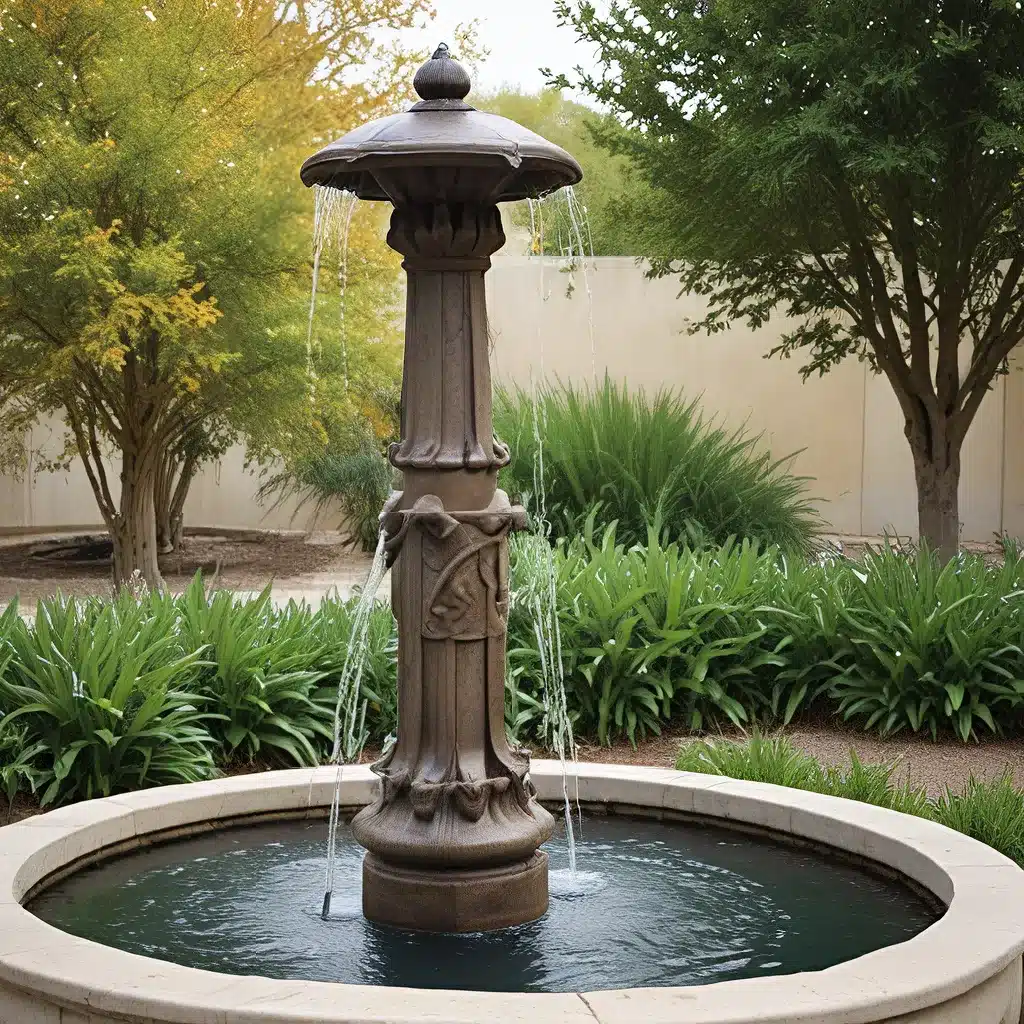
Fountain Design Essentials – Welcome to Fountain Lights
Fountain Design Essentials – Welcome to Fountain Lights

As someone who has dabbled in the world of fountain lighting and design, I can confidess that selecting the right fountain pump can be a daunting task. There are so many factors to consider – from energy efficiency and flow rates to noise levels and maintenance requirements. But fear not, my friend, for I’m here to guide you through the process of mastering the art of fountain pump selection.
At the heart of every fountain pump lies the impeller – a rotating component responsible for transferring energy from the motor to the fluid. The design of the impeller is crucial, as it determines the pump’s ability to handle the unique challenges posed by fountain applications.
Pump experts have identified several types of impellers, each with its own strengths and weaknesses:
When selecting a fountain pump, it’s crucial to carefully consider the composition and characteristics of the water in your fountain. This will help you choose the right impeller type to ensure reliable, efficient, and clog-free operation.
One of the key features to look for in a fountain pump is the self-priming capability. Unlike traditional pumps, self-priming pumps are equipped with a remarkable ability to start working without the need for manual priming.
Self-priming pumps work by creating a temporary vacuum in the pump casing, which forces air out and draws in water, effectively priming the system. This eliminates the hassle of manual priming, saving you time and effort during setup and maintenance.
Moreover, self-priming pumps shine in scenarios where the pump is situated above the water source, as they can start working without needing to be submerged. This makes them a fantastic choice for fountain applications, where the pump may need to be positioned in a more accessible location.
To truly understand the inner workings of a self-priming pump, let’s dive into the key components that make it tick:
Understanding the function of these key components is essential in selecting the right fountain pump for your specific needs and ensuring its long-term reliability and efficiency.
As with any technology, self-priming pumps come with their own set of advantages and drawbacks. Let’s take a closer look at how they stack up against traditional pumps:
Advantages of Self-Priming Pumps:
– Hassle-free setup: Self-priming pumps can start working without the need for manual priming, making the installation and setup process much quicker and more convenient.
– Versatility in placement: These pumps can be positioned above the water source, as they can self-prime without being submerged, offering more flexibility in fountain design and placement.
– Suitability for various applications: Self-priming pumps excel in scenarios where air getting trapped in the system is a common challenge, such as in irrigation, construction dewatering, and municipal sewer bypass operations.
Potential Drawbacks of Self-Priming Pumps:
– Bulkier design: Self-priming pumps tend to be larger and heavier than traditional pumps, which may pose installation challenges in some fountain configurations.
– Higher upfront cost: The additional components and engineering required for self-priming capabilities can result in a higher initial investment compared to traditional pump models.
When it comes to selecting the right fountain pump, it’s all about finding the perfect balance between the unique requirements of your project and the strengths and limitations of different pump types. By carefully weighing the pros and cons, you can make an informed decision that will ensure the long-term success and efficiency of your fountain.
Of course, selecting the right fountain pump is only half the battle. Proper maintenance and care are essential to keeping your pump running at peak performance for years to come. Here are some key tips to help you master the art of fountain pump maintenance:
By staying on top of routine maintenance and being proactive in addressing any issues that arise, you can keep your fountain pump running smoothly and efficiently for years to come. And when it comes to maintaining your fountain lighting, the same principles apply – regular inspections, cleaning, and prompt attention to any problems will ensure your fountain continues to be a captivating and long-lasting centerpiece in your outdoor oasis.
As you can see, the world of fountain pump selection and maintenance is a complex and multifaceted one. With so many factors to consider, from impeller design to self-priming capabilities, it can be easy to feel overwhelmed.
But take heart, my friend, for within this complexity lies the beauty of simplicity. By understanding the key components and their roles, and by embracing a proactive approach to maintenance, you can master the art of fountain pump selection and ensure your fountain operates seamlessly for years to come.
Remember, the journey is just as important as the destination. Embrace the curiosity and problem-solving that comes with this endeavor, and you’ll find that the challenges of pump selection and maintenance are ultimately opportunities to learn, grow, and create something truly remarkable.
So, go forth and conquer the world of fountain pumps! With the right knowledge and a touch of passion and perseverance, you’ll be well on your way to transforming your outdoor space into a mesmerizing, water-powered oasis. Happy fountain-building, my friend!
Share to :
Subscribe to our newsletter for the latest in fountain design, innovative lighting ideas, and exclusive tips straight to your inbox. Join the community shaping the future of water features.

Rapid delivery to your doorstep.

Excellence in every product.

Great value for your investment.

Assistance at any hour.
Fountain Lights — Illuminating creativity in every splash!
Copyright © 2023. All Right Reserved